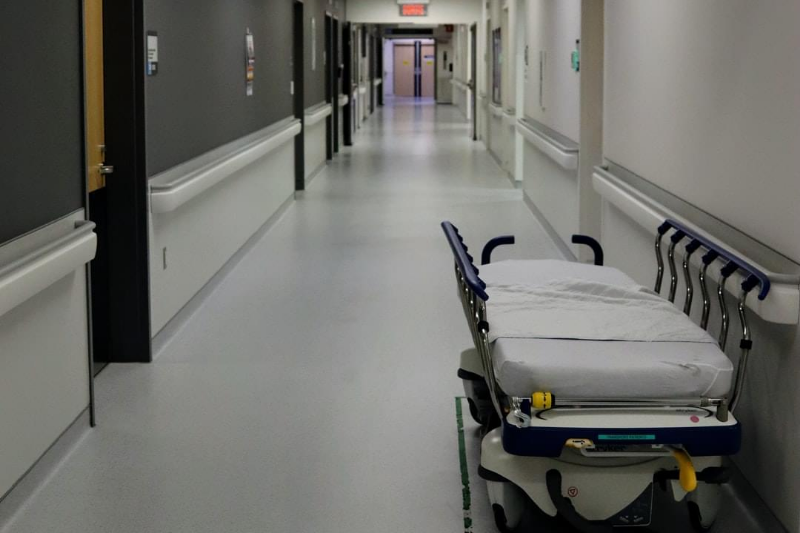As the pandemic refuses to loosen its grip of our country, waiting times for elective surgery are back in the headlines. Although Covid-19 has exacerbated the issue, it stems from a system-wide and deep rooted capacity shortage.
For various reasons, there is very little spare capacity at key points in the healthcare system, and this can cause bottlenecks and delays at times of high demand. We know that the pandemic has made the situation worse, but capacity was already under pressure before the arrival of Covid-19. Over time, demand for emergency care, aged care and hospital beds have increased, while overall capacity has decreased. The number of beds per 1,000 people over the age of 65, for example, has been declining for 27 years.
With demand for bedspaces already high, and hospitals having to retain capacity for Covid-19 patients, something has to give – and that something is often non-urgent elective surgery, such as knee and hip operations. Despite the measures taken at state level to catch up on waiting lists, activity has been very much stop-start, leading to greater levels of uncertainty for patients and waiting times data that doesn’t necessarily show a consistent picture over time.
The question is what can be done to alleviate pressure on hospitals and ensure a more consistent activity level. It will be difficult to immediately address the staffing shortages, which have worsened during the pandemic as the borders have closed, but re-designing patient pathways to ensure the resources within hospitals are utilised more effectively will help. For example, this could be achieved by setting up a stand-alone assessment or minor injuries unit, so that patients that do not require hospital care are prevented from entering the hospital as far as possible.
The number of older patients that require medical care will not decrease over time and this issue needs a long term solution, but in cases where a shortage of beds in the social care sector are causing patients to stay longer than needed, taking up bedspaces and potentially leading to elective surgery cancellations, adding a modular ward with additional bedspaces means activity can continue.
And while we cannot accurately predict Covid-19 demand, we can protect non-urgent elective capacity, ensuring activity continues, by implementing temporary, flexible healthcare facilities, such as mobile operating theatres and wards or a stand-alone modular surgery complex. Regional inequalities can also be addressed using the same method.
Long waiting times
The Australian Medical Association’s Public Hospital Report Card 2021, published last month, highlighted how health services have struggled to cope since the start of the pandemic, despite a dramatic reduction in patient volumes. The report provides both a national picture and state level performance data, but admittedly, the figures are relatively old – the latest data is from 2019-20 to allow for comparisons, so it covers only the initial phase of the pandemic.
In terms of emergency waits, the report shows that below 70% of Australians attending emergency departments nationally were treated within the target of four hours, despite the number of patients presenting to emergency departments dropping in 2019-20. Over the five years prior to the pandemic, year-on-year growth had averaged more than 3%.
 Despite non-urgent treatments being on hold and emergency department demand being lower, hospitals treated only 75% of Category 2 elective surgery patients, which includes people needing cancer investigations, heart valve replacements, craniotomies for unruptured brain clots, within the recommended timeframe in 2019-20, meaning 25% of patients had to wait longer than 90 days for surgery. And one in five patients who needed Category 3 elective surgery, including hip or knee replacements, cataract surgery and tonsillectomies, waited more than a year.
Despite non-urgent treatments being on hold and emergency department demand being lower, hospitals treated only 75% of Category 2 elective surgery patients, which includes people needing cancer investigations, heart valve replacements, craniotomies for unruptured brain clots, within the recommended timeframe in 2019-20, meaning 25% of patients had to wait longer than 90 days for surgery. And one in five patients who needed Category 3 elective surgery, including hip or knee replacements, cataract surgery and tonsillectomies, waited more than a year.
The public hospital system has been stretched due to Covid-19, an increase in mental health conditions, overworked healthcare staff, patients presenting with more complex disease or at a more advanced stage, as well as a downward trend in private health insurance scheme participation.
Regional disparities
The report by the Australian Medical Association also highlighted inequalities in terms of access to healthcare between states, although each state faced its own challenges. For a start they have seen very different levels of Covid-19 impact. There was a one in three chance of those seeking emergency treatment being seen on time in the ACT – the worst-performing jurisdiction – while in NSW, there was a three in four chance of being seen within 30 minutes of arriving at a hospital.
There are also substantial differences when it comes to elective surgery. The chance of being seen within 90 days for elective surgery was over 90% in NSW and 88% in Queensland, but less than 40% in Tasmania, which had seen Category 3 surgery activity decline by more over 30% in 2019-20 compared to the previous year.
But the waiting time varies not just by state but also by area and between individual hospitals, and even the best performing states have hospitals which have seen a more severe impact. The report card shows that the Northern Territory’s hospital system was the least affected by Covid-19, with the number of elective surgery admissions in 2019-20 at 2.4% below the previous year. However, at one of the state’s major hospitals, more than half of patients needing less urgent Category 3 surgery had waited over 300 days, compared to the national average of 179 days.
As well as regional differences, there are also wide differences between the public and the private health systems for some types of elective procedures, such as cataract surgery.
Solving the capacity challenges
As mentioned, the data that forms the basis of the AMA’s analysis is quite old now, and the situation has changed since June 2020.
More recently, hospitals in NSW have returned to full capacity again following the lifting of a 75% cap on elective surgery in both private and public hospitals. But although the government has provided funding, including $30 million to private hospitals, to ensure patients whose elective surgery was postponed will be scheduled for surgery as soon as possible, and the vaccination programme has had a positive effect, it will take a long time to catch up.
In Victoria, there are also significant efforts to tackle the backlog, with the government spending an additional $300 million or so to boost capacity. More recent figures show that the effect of Covid-19 became even more marked than the reported situation in 2019-20, with Victorian hospitals carrying out around 12% fewer elective surgeries in 2020-21 than in the year before. This has led to waiting times for less urgent surgery increasing significantly and was at more than 67,000 by the end of September, according to the Victorian Agency for Health Information.
Surgery has also reportedly been cancelled in Western Australia due to a critical lack of bed space, and the state government there recently announced $400 million to fund more hospital beds, extra nurses and doctors. Nearly 600 elective surgeries were cancelled in WA hospitals during September 2021.
As the number of Covid-19 cases have fluctuated, elective surgery has been paused and restarted again in almost every state or territory at various times, but overall resilience has not improved. There is no doubt that the entire system needs more flex to cope with surges in demand. Rather than pouring money into the private sector or investing in expensive buildings that will take a long time to build and may go unused, implementing mobile or modular healthcare infrastructure can provide that flexibility along with additional capacity that can be on stand-by for future waves of Covid-19 or any other planned or unplanned event.
We will probably have to get used to living with Covid-19 for an extended period of time. And when the pandemic is over, the hospital system will no doubt face new capacity challenges, not least driven by the needs of our ageing population with more complex care needs. The pandemic has shown just how vulnerable our hospital system is and how urgently these wider capacity issues need to be addressed. While we won’t be able to solve every problem – or fix the healthcare staffing crisis – immediately, there are certainly plenty of actions that can be taken to improve the situation.
Call now on +61 (0)7 3554 1022 to speak to Q-bital Healthcare Solutions about flexible healthcare infrastructure.






